She plays the guzheng, he plays the ukulele: Meet the M’sian couple behind this 11 Y/O band

Back in 2011, Yi Mann was representing Malaysia in an international guzheng competition in Hong Kong, where she won the silver medal. And during this trip, she was invited by her friend to watch a Malaysian performer.
That performer was Alex, a multi-instrument artist who was collaborating with various international artists at the time.
The two then met on that night itself and Alex sent her a Facebook friend request the next day. After a year of being each other’s muses, they finally got together and were hitched in 2016.
And in the middle of that, Rockstars Production was formed in 2012.

“It started off as a fun thing,” Yi Mann shared with us. “Since Alex and I [had] just started dating, we talked about making music together. We sat down one day and tried to pair the guzheng with different instruments.”
With Alex being a multi-instrumentalist, he experimented with guitar, bass guitar, percussions, and finally ukulele.
Loving how the ukulele and guzheng complemented each other and blended together as a whole, the duo stuck to the idea and the rest is history.
Booked up until next year
I first came across Rockstars Production online through one of their music covers on Instagram, which is how I’ve seen a number of international acts get their start. But interestingly, the band told us that they began by playing at wedding gigs and private events.

And from our interview with them, this seems to be the band’s main focus. In fact, they’re occupied and booked for almost every weekend from the time of writing up until December 2023.
Some of their best achievements include winning in Amway Malaysia’s Y Xpress Talent competition, where they performed in front of a 20,000-person crowd.
“We recently had a sold-out show at Titi Jazz and Music and it was really heartwarming to see that people that we do not know actually purchase tickets to come watch us and support us because they truly love our music! We are really humbled by their support,” the couple told us.
Another way the couple is diversifying their music is through their new fusion ethnic band called Naungan.
Comprising the zhongruan, sape, sitar, tabla, rebana asli, and the guzheng, the band serves as a platform to highlight instruments traditionally played by various ethnic groups in Malaysia.

Speaking to Vulcan Post, Yi Mann and Alex explained that they gathered these musicians last year to shoot a music video covering “Malaysia” by Faizal Tahir, in hopes of spreading racial harmony through this project.
While it’s hard to gauge whether that specific goal is achieved, the pair happily shared that the music video garnered over ten thousand views with lots of positive feedback. And much to their delight, Faizal Tahir himself also endorsed it.
Beyond just creating new blends of music
Rockstars Production’s choice of sticking with the guzheng isn’t done just out of pure entertainment. The band’s core objective is to familiarise the younger generation with the traditional instrument, while also pushing the boundaries within the local music scene.
“We aim to inspire curiosity and interest in this traditional instrument among young musicians, showcasing its versatility through fusion with contemporary elements,” they expressed.
By leaving a lasting impact on the music landscape, the duo hope to enrich this cultural heritage and encourage cross-cultural exchange in Malaysia. And ultimately, their goal is to create meaningful music that resonates with people on a deeper level.

“Now that we have a child, it is definitely our top priority to strive hard and earn more money for the family. So we are always working hard to promote ourselves in hopes to land more job opportunities.”
There’s still hope in the local music industry
That said, the duo confided that it’s not easy to maintain a stable income if they don’t have regular gigs and teaching sessions.
As Rockstars Production is currently not tied to any musical labels yet, their main challenges revolve around marketing themselves. This includes getting their name out there, securing gigs, and performing said gigs at the end of the day.
“We’d definitely like to be signed and have a manager to assist in the marketing side, so we can focus fully on producing great music to our audiences,” they said.
Both Alex and Yi Mann expressed keen interest in being more involved in the band’s artistic development. To reach that, they plan to invest time and effort into expanding their music skills and knowledge.

At the same time, they intend to share that knowledge and skills with others through teaching music, conducting workshops, and mentoring aspiring musicians. These are just some ways they hope to give back to the music community and contribute to the growth of other artists.
Other steps that they believe would nurture homegrown talents in the local music industry include mentorship programmes for emerging musicians, collaborative spaces for industry players to network, and having better funding and policies for the local artists.
“Countries with larger music markets and established industry hubs may offer more opportunities for exposure and success. However, that doesn’t mean success is impossible in Malaysia or any other country with a smaller music market,” the couple stated.
While the local music industry isn’t as prolific as those abroad, it’s interesting to see how the band has continued to persevere and grow for over a decade. And I personally hope to see more interesting instrumental pairings from the local space, especially those with the intention of highlighting cultural traditions.

- Learn more about Rockstars Production here.
- Read articles we’ve written about Malaysian startups here.
Also Read: Here’s how M’sian SMEs can get 1,000GB of high-speed data at RM50/month to boost their biz
Featured Image Credit: Rockstars Production
Sea Ltd’s MariBank launches Mari Invest – instant cash-out for low-risk investments

Sea Limited’s wholly-owned digital bank, MariBank, has partnered asset management company Lion Global Investors to launch a new investment product, Mari Invest, today (October 3).
According to the digital bank, Mari Invest is the first investment account by a bank in Singapore to provide instant cash-out.
Through the investment account, investors will have access to low-risk investments such as MAS Treasury Bills, money market and high-quality bond funds, as well as the Lion-MariBank Save Plus fund in collaboration with Lion Global Investors. This enables investors to reap potentially higher returns while keeping overall portfolio risk low.

Additionally, Mari Invest is also designed to make investing simple by eliminating traditional barriers to investing, such as high minimum investment amounts, sales or platform charges, and lengthy lock-in periods with long redemption timelines.
Investors can start investing through Mari Invest with just S$1 and withdraw their investments instantly in cash anytime, capped at S$10,000 per investor daily, subject to availability. The platform does not charge any sales or platform charges and there are no lock-in periods or penalties for withdrawals.
We know that consumers today want to grow their wealth, but may find it hard to make decisions with the complex investment products out there. That’s why we introduced Mari Invest, it offers consumers a simple way to manage their wealth with relatively low risk.
– Zheng Yudong, CEO, MariBank
Mari Invest complements MariBank’s flagship savings product, Mari Savings Account, providing simple and rewarding offerings for users to manage their finances.
The Mari Savings Account currently offers a per annum interest of 2.88 per cent, paid daily, without the need to fulfil any additional conditions such as salary crediting or minimum spend.
Featured Image Credit: MariBank
Also Read: Sea joins the digital banking race with MariBank’s launch to the public on an invite-only basis
5 reasons why drone deliveries have yet to fully take off in M’sia
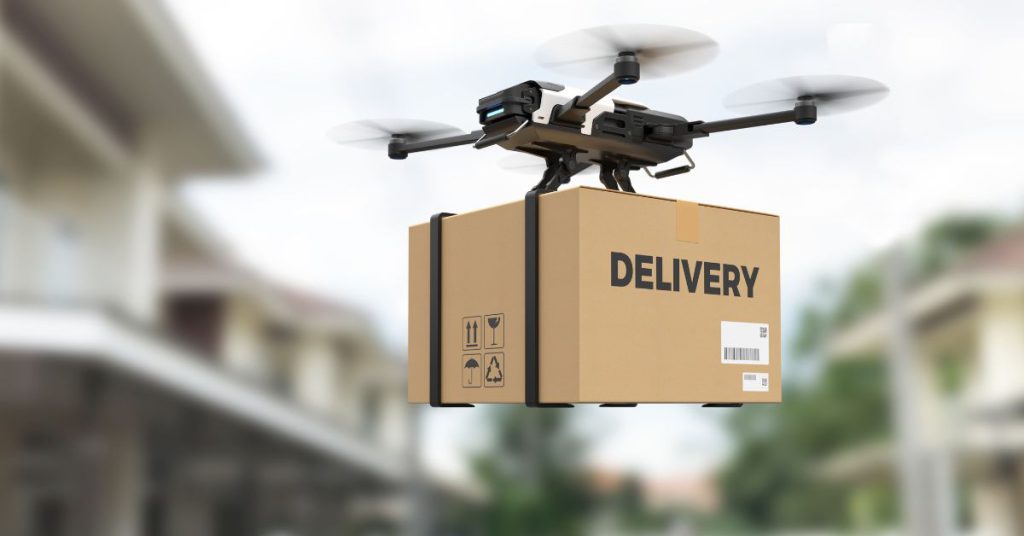
[This is a sponsored article with MRANTI.]
The idea for drone or Unmanned Aerial System (UAS) deliveries was made mainstream when Amazon shared their plans in 2013 to have it take the skies within five years.
They envisioned a promising concept: Packages containing products, from toothpaste to smartphones, would be brought to customers’ doors or lawns by a drone. The drone would land, deliver the package, then fly away.
However, this hasn’t taken off commercially.
Locally, companies like AirAsia’s Teleport have shared their ambitions of rolling out drone deliveries to streamline ecommerce logistics.
Such plans have remained in pilot testing for years now, with no official news of when Malaysians can expect to see our skies filled with parcels to be dropped off.
What happened?
In partnership with Malaysian Research Accelerator for Technology & Innovation (MRANTI), we invited local dronetech experts to share their input on why drone deliveries haven’t taken off in Malaysia.
Our interviewees comprised representatives from Universiti Kuala Lumpur’s Malaysian Institute of Aviation Technology (UNIKL MIAT), Malaysia UAV Drones Activist Society (MUDAS), along with the nation’s official drone, UAS, and aviation regulator, Civil Aviation Authority of Malaysia (CAAM).
Drone deliveries have happened in Malaysia before
While commercial drone deliveries haven’t been commercialised, it’s worth highlighting that they have been tested in Malaysia.
In February 2021, DHL and Malaysia Aviation Group’s cargo subsidiary collaborated on a pilot project to deliver medical supplies to remote areas in Sarawak.
They used a drone to transport blood samples, vaccines, and medical equipment to rural communities, bypassing challenges posed by limited road infrastructure.
During the 2021 and 2022 flood relief operations led by the Ministry of Science, Technology and Innovation (MOSTI), Malaysian drone service providers were instrumental in delivering vital supplies to flood-stricken remote areas.
These areas were otherwise inaccessible due to the floods, and MRANTI served as the lead agency in coordinating the Special Drone Services Emergency Task Force (PTK2Dron).
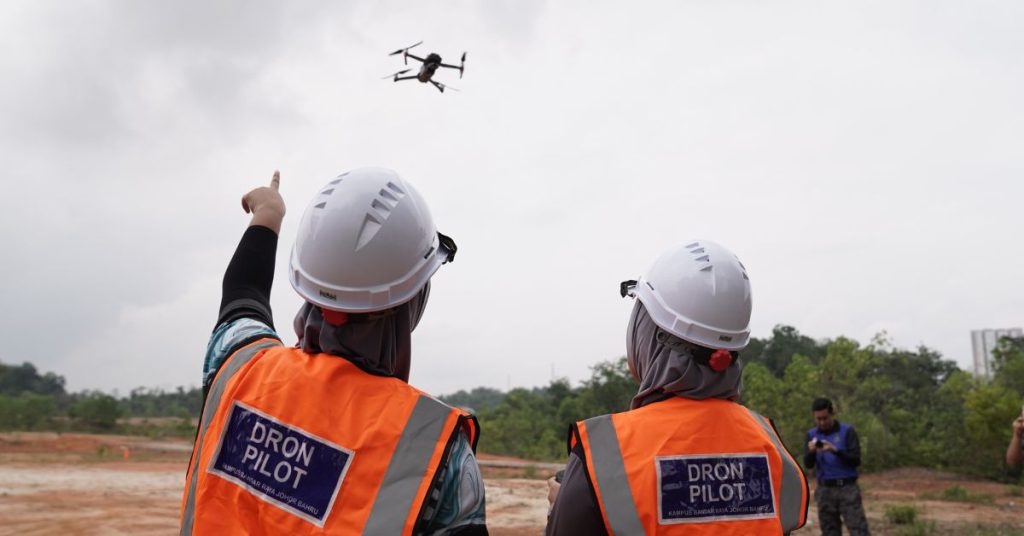
CAAM highlighted another case study involving the delivery of medical supplies from a hospital to an urban residential area.
To drop off the supplies, the drone utilised a parachute system which allowed for safe emergency landings. This minimised the risks of damaging the drone, payload (items being carried), or anything on the ground.
Why have such players been given approval for drone deliveries, though?
“These projects were conducted as pilot programmes or under specific approvals by the relevant authorities,” said Dr Hazariah Mohd Noh, a deputy dean, senior lecturer, and researcher from UNIKL MIAT.
“In many cases, regulatory bodies may allow certain projects to proceed on a trial basis to assess the feasibility, safety, and effectiveness of drone deliveries in specific use cases, such as transporting medical supplies to remote areas.”
CAAM added that such permissions are usually granted for a limited time and under specific conditions as mentioned in the Civil Aviation Directives (CAD).
More specifically, the CAD 6011 Part V: Special UAS Project, highlights that drone service providers are expected to demonstrate strict adherence to safety protocols and regulatory requirements during the trial phase.
So, why doesn’t Malaysia have more drone deliveries?
1. Drone deliveries aren’t cost-effective, yet
The mass adoption of drone deliveries can be expensive.
To keep up with the promise of speedy deliveries, ecommerce companies might have to build specialised drone delivery facilities to meet faster delivery promises. That would also mean having more cost-intensive warehouses and potentially more employees.
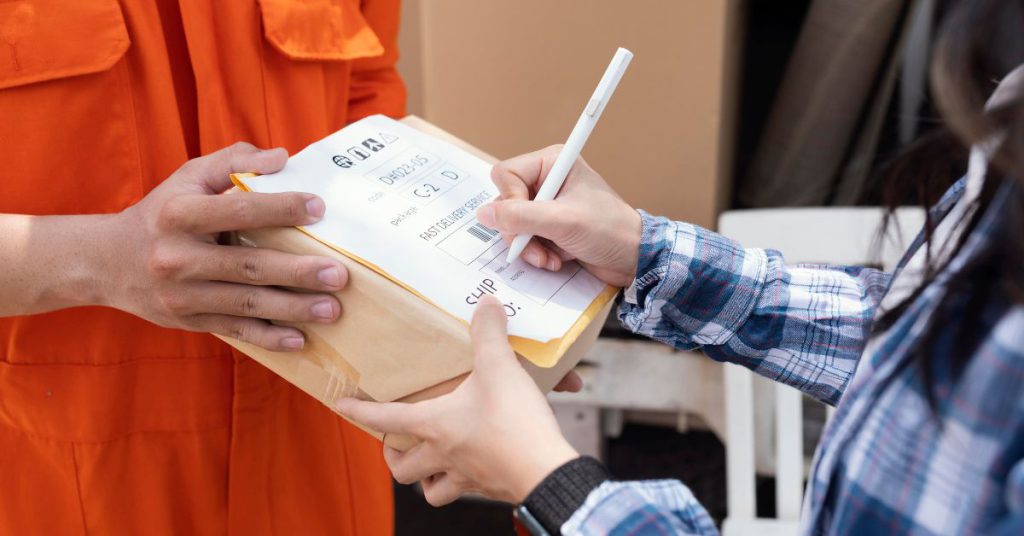
Practically, for drone deliveries to take off, service providers have to prove that they can offer a cost-competitive edge compared to land-based methods such as motorbikes, cars, and lorries.
Automation could therefore be a key factor in lowering the cost of drone deliveries. This will have to come alongside developing drones that can carry more payload and fly longer distances with better batteries.
With such features, delivery drones could reduce the need for human drivers, and therefore lower fuel consumption associated with traditional delivery vehicles.
2. The ecological and social impact of drone deliveries is still unknown
William Alvisse, Secretary of MUDAS pointed out that the commercialisation of drone deliveries could have an impact on nature, and subsequently human welfare.
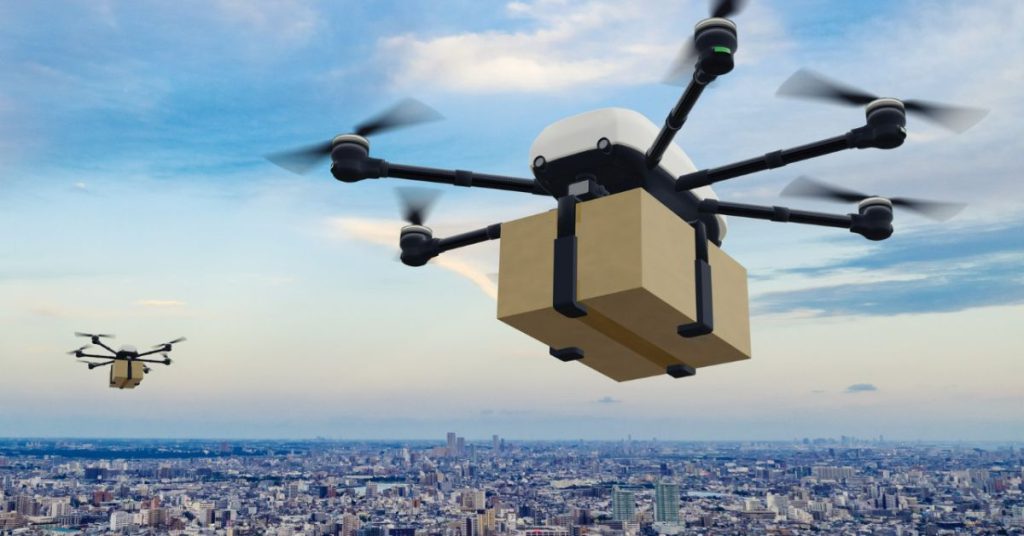
For example, widespread drone operations could contribute to noise pollution, especially in urban areas.
Thus, regulators are still researching the environmental and social impact of drones, which CAAM noted is a crucial area to consider in their guidelines.
With proper planning and optimisation, large-scale drone deliveries could offer a greener alternative to traditional delivery methods.
This is because drones run on electricity and produce lower emissions during operation, which could contribute to a cleaner transportation system.
3. The public still doesn’t trust dronetech fully
Like any emerging tech, the public may view the novelty of drone deliveries with an air of distrust.
“The worst thing that could happen to the industry to elevate the public’s distrust is a series of high-profile accidents at launch,” CAAM said.
Manufacturers and regulators must strive for perfection, which relies heavily on the safety features equipped on drones.
“The technology would require an autonomous drone which is equipped with artificial intelligence (AI) able to reliably identify a clear landing zone,” CAAM explained.
Delivery drones must also have obstacle avoidance features to avoid any objects in their delivery path, be they a person, building, or animal such as birds.
“The drones must also have backup features that can mitigate other potential risks,” added William.
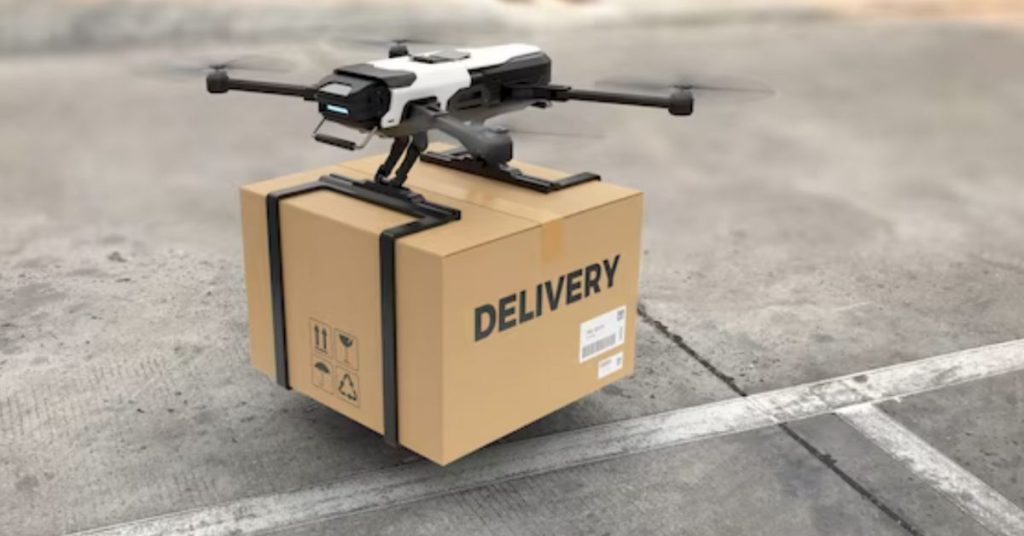
Taking notice of this area, CAAM assured that regulators are still determining how packages can be dropped off safely.
“Various delivery methods have been proposed, such as hovering the drone at a safe height above the destination and lowering the package via a cord, a parachute dropping the parcel onto the landing area, or employing dedicated delivery stations,” CAAM shared.
For now, the safety of delivery drones is something that’s still being worked out, along with a form of insurance coverage in the unfortunate scenario where damages are caused by a delivery drone.
Advocacy initiatives such as those conducted by associations like MUDAS are vital in educating the public and communities to give them a better understanding of dronetech.
4. We still don’t know who gets to fly the delivery drones
Will they be individuals, SMEs, ecommerce platforms, corporations, or dedicated logistics companies?
The interviewees concurred that if every drone operator flies their drones at once, it can lead to airspace congestion between drones and other aircraft, such as aeroplanes and helicopters.
Hence, aerospace regulators are still determining the proper flight paths, or “Drone Highways” for delivery drones.

Dr Hazariah also brought up an interesting point.
“From an industrial and corporate perspective, if drone deliveries are made available to all parties, it may result in unfair competition, especially for SMEs.”
CAAM chimed in, highlighting that businesses could face challenges such as quality control and customer satisfaction in their delivery experience.
In such a scenario, it may then be necessary for third-party logistics companies to be the ones providing drone delivery services between businesses and consumers for a more even playing ground.
That way, drone delivery prices can be determined by dedicated logistics players, and consumers who opt for drone deliveries will be the ones bearing the shipping costs.
5. No official regulation for drone deliveries has been set globally
As dronetech is an emerging industry, global government agencies and aviation authorities are still coming up with comprehensive regulations to ensure the safe and effective integration of drones into various sectors.
It’s likely that Malaysia will only see developments in drone deliveries after they are rolled out globally first. That was noted by Associate Professor Ir. Abu Hanifah Haji Abdullah, a retired Airworthiness Engineering and Management Research Leader from UNIKL MIAT.
He elaborated that all aviation activities are subjected to compliance with the standards published by the International Civil Aviation Organization (ICAO).
“For the case of drone deliveries, the legislation framework does not officially exist yet in the world. However, CAAM has published provisions to legislate drones for research and development activities,” Prof Abu added.
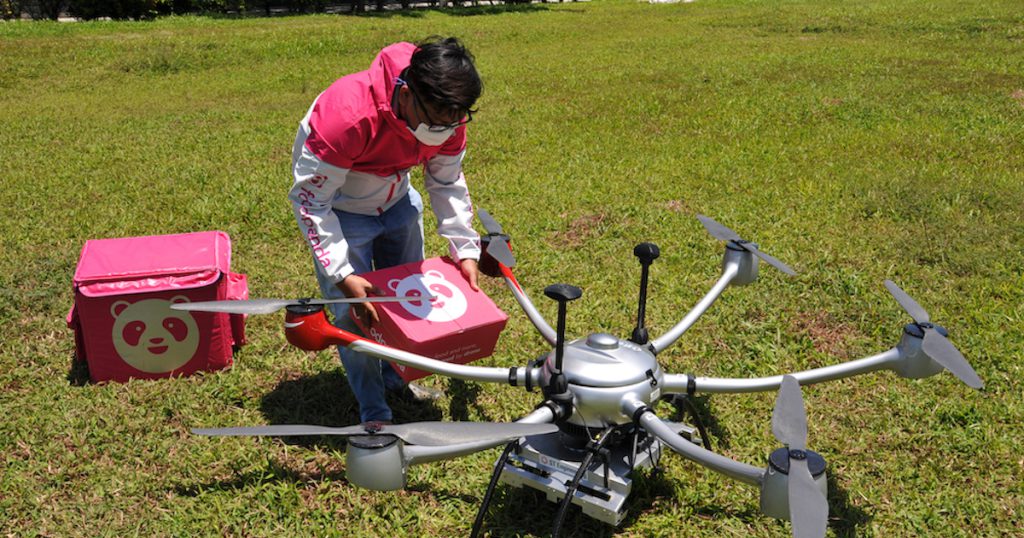
However, MRANTI is positive that drone delivery operations will be operational and commercialised sooner than people might think.
That’s according to Wan Mohd Farhan, MRANTI’s Head of DroneTech who’s also facilitating missions under the Malaysia Dronetech Action Plan 2022-2023 (MDTAP30).
“We are being updated by the authorities and solution providers that there are multiple drone delivery pilots currently being tested in the healthcare, as well as the oil and gas industry,” Farhan told Vulcan Post.
“With the current CAD being observed and risk mitigations complied by the drone operators, as well as the UAS Traffic Management system deployed, we could see the commercial deployment of drone delivery in Malaysia as soon as next year.”
-//-
While this article has touched on a handful of areas that need to be addressed before drone deliveries can take flight, it doesn’t encompass the full picture brought up by the dronetech experts.
This is especially so in terms of the technical aspects required of drones and their operators to safely deliver parcels.
Questions still being discussed include:
What’s the maximum weight of parcels a drone can carry? Which drones are suited for the job? What altitude should delivery drones fly at to avoid planes and other aircraft? Who will manage air traffic control for delivery drones?
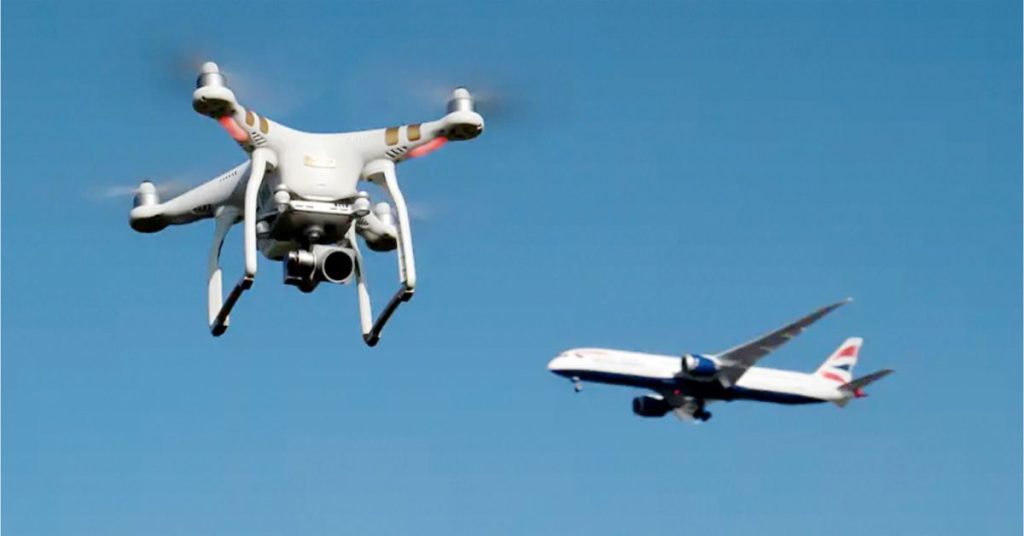
For now, our interviewees believe that once drone deliveries become more widespread, there will be a couple of industries that might be prioritised.
Some examples include the transport of medical supplies, and shore-to-ship deliveries.
As Malaysians await the day when we might get to experience the potential benefits of drone deliveries, drone hobbyists who still wish to practise their flying can do so within the guidelines of existing regulations.
That is, avoiding no-fly zones such as Putrajaya, KLCC, public and high-risk areas like hospitals or industrial complexes, as well as ensuring that your drone flying permits are up to date.
Meanwhile, those who wish to actively get involved in the development of Malaysia’s dronetech industry can get in touch with MRANTI.
Also Read: Before fixing your iPhone with fake parts, here’s what this M’sian biz wants you to know
Featured Image Credit: Freepik
M’sian fintech startup bags RM5mil funding to continue financing women micro-entrepreneurs
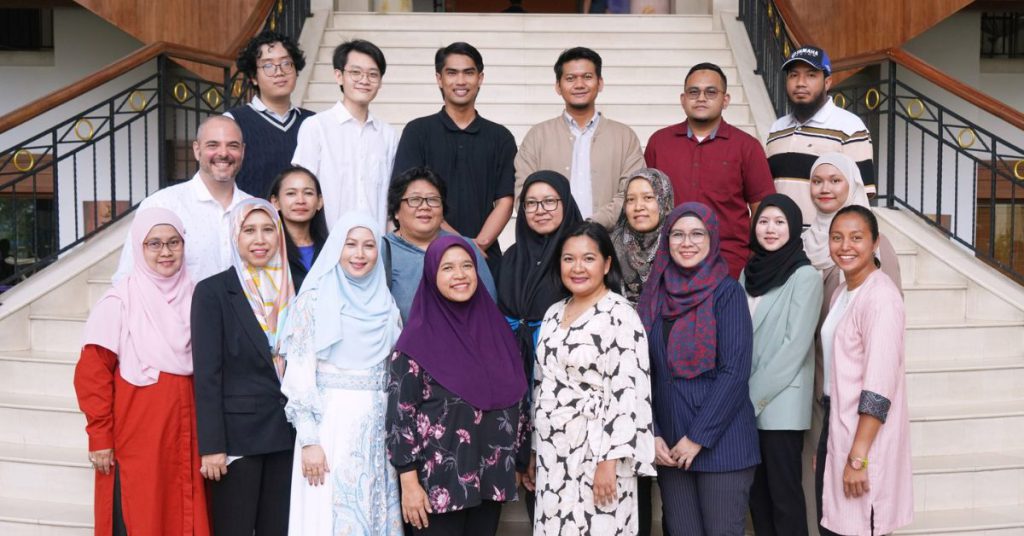
MADCash, a homegrown fintech startup providing microfunding to women entrepreneurs, announced the successful completion of its Pre-Series A funding round in an October 3 press release.
It has secured a RM5 million investment led by Artem Ventures, supported by MSW Ventures and ScaleUp Founders Fund.
The fresh funds will be used to enhance the company’s online platform using AI technology, cover operational and marketing expenses, and explore expansion opportunities in the Southeast Asia region, the release stated.
Nuraizah Shamsul Baharin, the managing director of MADCash, also said in the release that the team has “so much in the work pipeline”, which includes launching the MADCash Academy.

Along with this funding, MADCash has also welcomed Musyrifah Malek as a co-founder. Musyrifah boasts an extensive legal background that the team believes will be pivotal in advancing the company’s corporate governance policy and practices.
Multiply, assist, donate
The MAD in MADCash stands for Multiply, Assist, Donate, reflecting the business’ goal of funding and supporting unbanked and underbanked women entrepreneurs.
Instead of just giving out money, MADCash also aims to create an alternative credit scoring to increase the entrepreneurs’ future bankability.
One of two founders, Nuraizah, is a seasoned technopreneur who has built and led companies that create software and mobile apps. She was also the president of the Women Entrepreneur Network Association Malaysia (WENA).
Meanwhile, Dr. Nikolai, who is an angel investor and advisor for MADCash, boasts plenty of experience in mega projects in Malaysia, such as the Multimedia Super Corridor (MSC) and Digital Free Trade Zone (DFTZ).

The founders told Vulcan Post in 2022 that the idea for MADCash started around April 2020, during the beginnings of the pandemic.
At the time, the team saw that women entrepreneurs were struggling to restart their micro businesses after the first lockdown, and thus RM3,000 was distributed to three ladies.
The entrepreneurs ended up making RM17,000 in total the very next month.
Motivated by this, they continued the effort while refining how they worked, and eventually grew into the MADCash of today.
Continuing to uplift female entrepreneurs
With this round of funding, MADCash will be able to continue to not just finance but educate more women entrepreneurs, such as through its academy.
Explaining the decision to invest in MADCash, Tunku Omar Asraf, the principal of Artem Ventures said, “MADCash recognises the importance of financial inclusion for closing the gap of poverty and gender inequality, which can lead to better economic growth in the SEA region.”
Meanwhile, MSW Ventures general partner Jeffrey Seah said that supporting the unbanked and underbanked has been a digital economy problem, one that has been searching for a sustainable solution.
“Nuraizah has demonstrated a strong grasp of the complex and ever-changing agendas amongst the institutional and strategic stakeholders, forging a programme-based business model that can serve to realise the potential of women entrepreneurs, providing them with a level of self-sufficiency beyond sustenance,” he said.

Renuka Sena, a senior partner at ScaleUp Malaysia, shared how Nuraizah had joined ScaleUp’s accelerator last year.
“When she joined our accelerator programme in 2022, MADCash had only supported 83 women with just US$20K as microfunds,” Renuka said.
“Since then, her team has really focused on raising more funds under management to US$700K and improving their processes to deploy funds to more deserving women.”
By the end of this year, MADCash is set to have extended its support to over 800 women. Among its partners are notable financial institutions such as Hong Leong Islamic Bank and PayNet, the release stated.
The RM5 million investment into MADCash will not only fund the startup itself, but go towards supporting a whole ecosystem of entrepreneurs too.
We’ve reached out to the MADCash team to learn more about what’s next for them following this funding, and will be updating the article accordingly.
Also Read: Before fixing your iPhone with fake parts, here’s what this M’sian biz wants you to know
Featured Image Credit: MADCash
NUS and CSA to launch $20M cybersecurity centre to drive talent, innovation, growth in S’pore
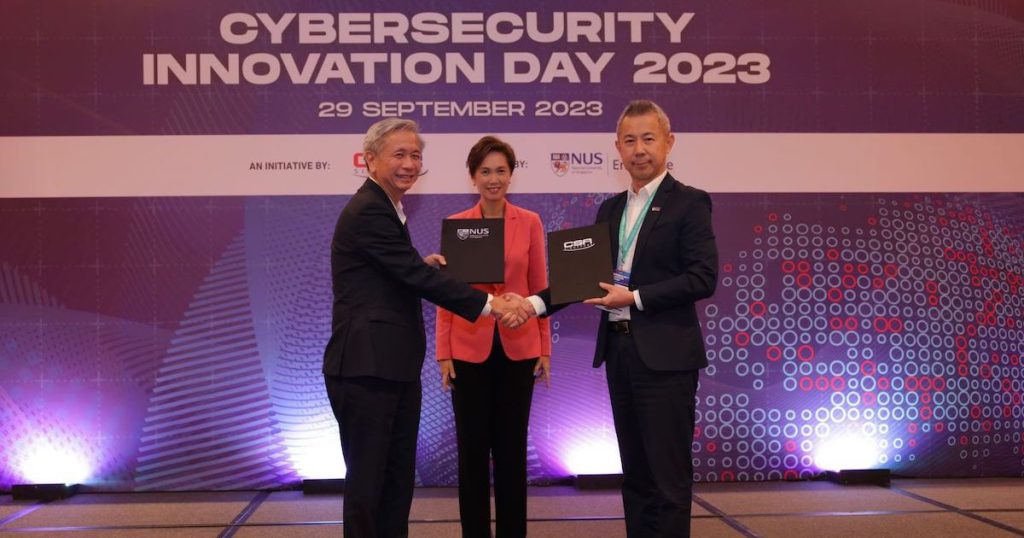
In response to the escalating demand for robust cybersecurity solutions, the National University of Singapore (NUS) and the Cyber Security Agency of Singapore (CSA) have announced their partnership to establish the NUS-CSA CyberSG Talent, Innovation, and Growth (TIG) Collaboration Centre, backed by a substantial S$20 million investment.
The joint initiative, unveiled at the Cybersecurity Industry Innovation Day last Friday (September 29), has set ambitious goals of solidifying Singapore’s position as the global epicentre for cybersecurity innovation and catalysing economic growth in the sector.
In today’s interconnected digital landscape, the need for sophisticated and dependable cybersecurity solutions has reached unprecedented levels.
With Southeast Asia’s digital economy projected to reach US$1 trillion by 2030 and the rise of internet users in the region, a robust cybersecurity industry is considered critical to safeguarding Singapore’s digital future and strengthening its resilience against recent scams and cybercrimes.
The CyberSG TIG Collaboration Centre aims to bolster Singapore’s reputation as a trusted digital hub and promote cybersecurity as a burgeoning economic driver for the nation.
Three key pillars of the new centre
The centre’s strategic initiatives are structured around three core pillars: talent, innovation, and growth.
It focuses on nurturing a pipeline of skilled cybersecurity professionals and expanding cybersecurity capabilities across various industry sectors. NUS will collaborate closely with CSA to develop and deliver impactful programs, including SG Cyber Youth, to ensure that talent development remains aligned with the evolving cybersecurity landscape.
Co-innovation with industry players and nurturing promising cybersecurity startups are also the core components of this pillar. Initiatives like the annual Cybersecurity Industry Call for Innovation (CyberCall) will invite companies to co-develop innovative solutions for critical cybersecurity challenges.
NUS will also introduce the CyberBoost program, tailored to support the growth of cybersecurity companies at different stages of development.
Lastly, it aims to facilitate the international expansion of local cybersecurity companies by providing valuable insights, organising business missions, and creating playbooks to help them navigate global markets.
Professor Tan Eng Chye, President of NUS, emphasised the importance of cybersecurity as a key driver for economic growth and resilience, saying, “Our collaboration with CSA to set up the NUS-CSA CyberSG TIG Collaboration Centre leverages the University’s strengths, including ready innovation platforms, entrepreneurial academic programs, a global ecosystem network, and multidisciplinary resources. We aim to promote growth in the cybersecurity sector and enhance cybersecurity capabilities across industry sectors, enabling them to be future-ready.”
David Koh, Commissioner of Cybersecurity and Chief Executive of CSA, also underscored the significance of workforce and ecosystem development in Singapore’s cybersecurity strategy. “The CyberSG TIG Collaboration Centre will play an important role in bringing together ecosystem stakeholders to develop innovative solutions and grow talent,” he said.
Collaborations with diverse partners, such as ISTARI, the global cybersecurity platform established by Temasek, are integral to the success of the CyberSG TIG Collaboration Centre. NUS and ISTARI will collaborate on internships, mentorships, and joint events to advance the centre’s objectives and foster collaborative efforts aimed at enhancing cyber resilience in the region.
Rashmy Chatterjee, CEO of ISTARI, expressed enthusiasm about the partnership, saying, “As a collaboration, we can collectively help make Singapore the premier global cybersecurity hub for innovation and talent.”
The NUS-CSA CyberSG TIG Collaboration Centre represents a significant step towards fortifying Singapore’s cybersecurity capabilities, fostering innovation, and driving economic growth in the digital age. With its strategic pillars and partnerships, the centre is poised to make a lasting impact on the global cybersecurity landscape.
Featured Image Credit: NUS
Also Read: Why cybersecurity is one of Singapore’s most in-demand jobs in 2023
This local airline’s answer to making Subang Airport an aviation hub lies in these new jets
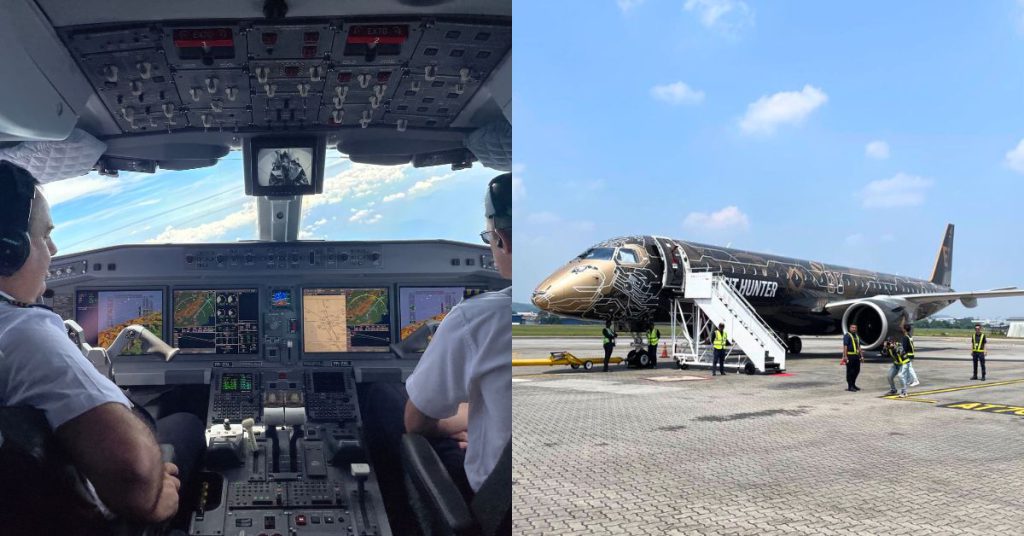
Homegrown airline SKS Airways has given a sneak-peek of the aircraft it will be using to service flights out of the Sultan Abdul Aziz Shah Airport (better known as the Subang Airport) in a media familiarisation event on September 28.
Based in Subang Airport, the commercial airline is a part of the SKS Group. It commenced its first commercial flight on January 25, 2022, specialising in island-hopping services. Currently, the destinations it offers are Pulau Tioman and Pulau Redang.
In May this year, SKS Airways had announced that it had selected the Embraer E195-E2 jets to service its future flights. The airline has already leased 10 of the jets from Embraer.
Embraer is a Brazil-headquartered aerospace company and aircraft manufacturer. Founded in 1969, the company has delivered more than 8,000 aircraft, which is reported by the company to transport over 145 million passengers per year.
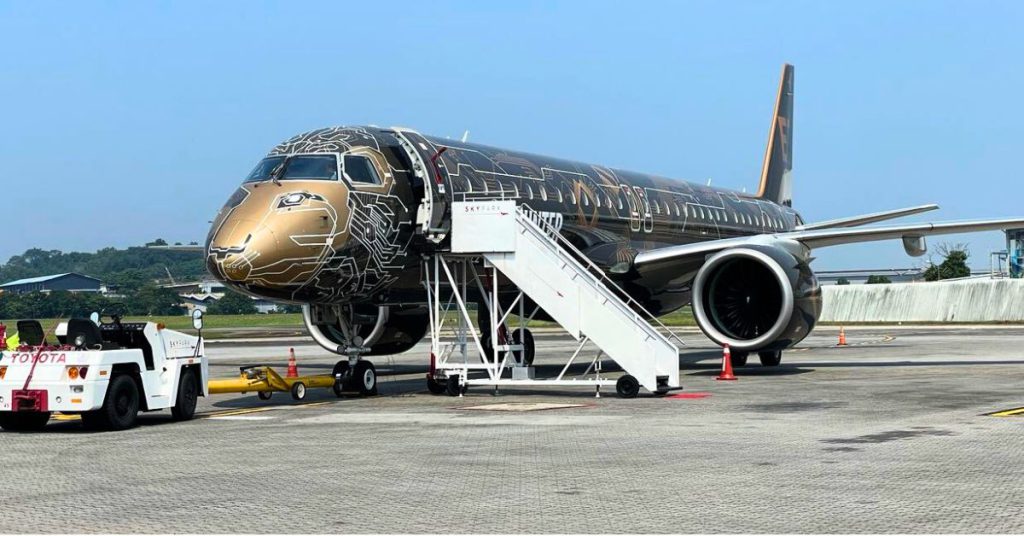
SKS Airways will be the first Southeast Asian operator of the E195-E2 jets.
According to a press release from SKS Airways, the Embraer E195-E2 fleet is a vital component of SKS Airways’s expansion plan and part of its new, soon-to-be-unveiled brand offering.
“In essence, the airline’s key value proposition will be to offer better connectivity and time saved whilst offering convenience as well as comfort for passengers traveling within the region.”
Reinvigorating the Subang airport
Even those who are not frequent travellers will know that in comparison to KLIA, the Subang Airport is not as popular, and even said to be underutilised by industry professionals.
In June 2023, Transport Minister Anthony Loke announced that the ministry has obtained an approval from the cabinet on a business plan proposal to redevelop the airport.
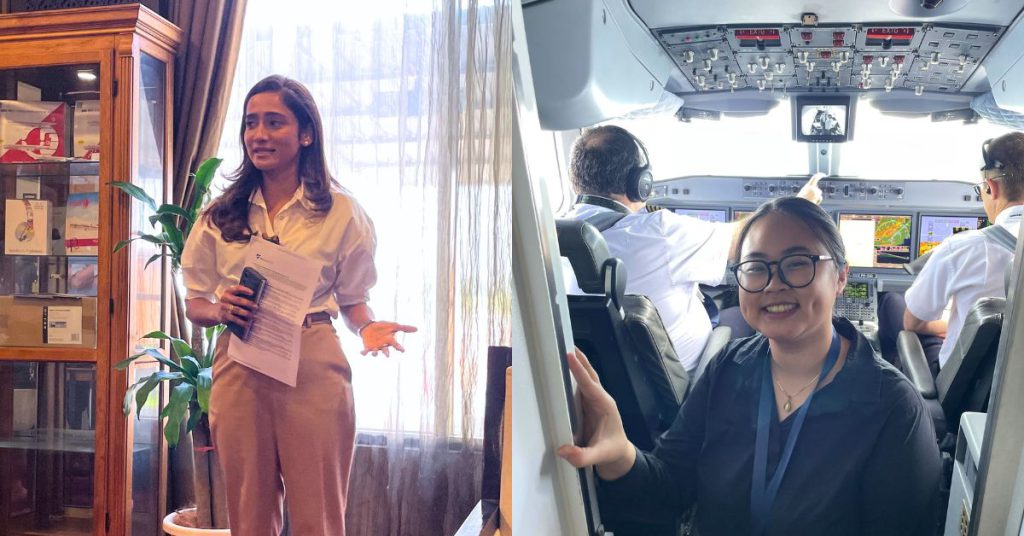
The plan is dubbed the Subang Airport Regeneration Plan (SARP), and will see the airport redeveloped into a premium city airport and aviation hub, the New Straits Times reported.
Seemingly leveraging this are Embraer and SKS Airways. With the incoming deliveries from Embraer, SKS Airways is set to be the first regional airline operating out of Subang and aims to “reshape the future of aviation by enhancing connectivity within the region”, its corporate profile stated.
Embraer also reports in the book that the E-Jets E2 family of aircraft is the “most suitable aircraft to connect Malaysia” due to its seat capacity of 100 to 150 seats.
During the media familiarisation session, Victor Vieira, the sales director at Embraer, shared, “We believe this aircraft is a gamechanger for this country. Because of its right capacity, it can tap the gap between the turboprops and large-body aircraft that is part of the fleet profiles of airlines in Malaysia.”
“We see many opportunities to optimise the network of the current services, right now the average seat capacity in Malaysia is around 160 and 180 seats, and the average passengers ranges from 120 to 130 seats.”

Not only can the E-Jets E2 match the current market demand, Victor also stated that it can help open new direct routes that cannot be served efficiently by large-capacity aircraft.
This may be because the aircraft available are too big and the demand from those routes can’t fill all the seats, or perhaps the aircraft doesn’t have the right operational profile for those airports.
“That’s exactly what the E195-E2 can do—to find uncharted markets that the competition cannot serve,” he said.
On top of that, Embraer also believes that its E-Jets E2 provides the ideal economics as it offers lower operating cost per trip compared to popular models flying in Malaysia.
“A total of 30% of Malaysia’s nonstop routes are served with less than one daily frequency—a clear mismatch between aircraft capacity and market demand,” Embraer also wrote in the value proposition book.
“The E-Jets E2 enables airlines to increase frequency in key markets due to a reduced cost base and adequate capacity.”
Less noise and environmental pollution
Increased frequency of flights doesn’t necessarily sound like a good thing, though, when it comes to our environment.
However, the E-Jets E2 reportedly have a smaller carbon footprint, emitting 33% less CO2 with an average demand per flight of 120 passengers in Malaysia, Embraer’s book claims.
The press release also states that the E195-E2 is designed to be compatible with sustainable aviation fuel (SAF), meaning it will mitigate carbon emission and contribute to improvements in air quality by reducing the release of pollutants and particulate matter during flights.
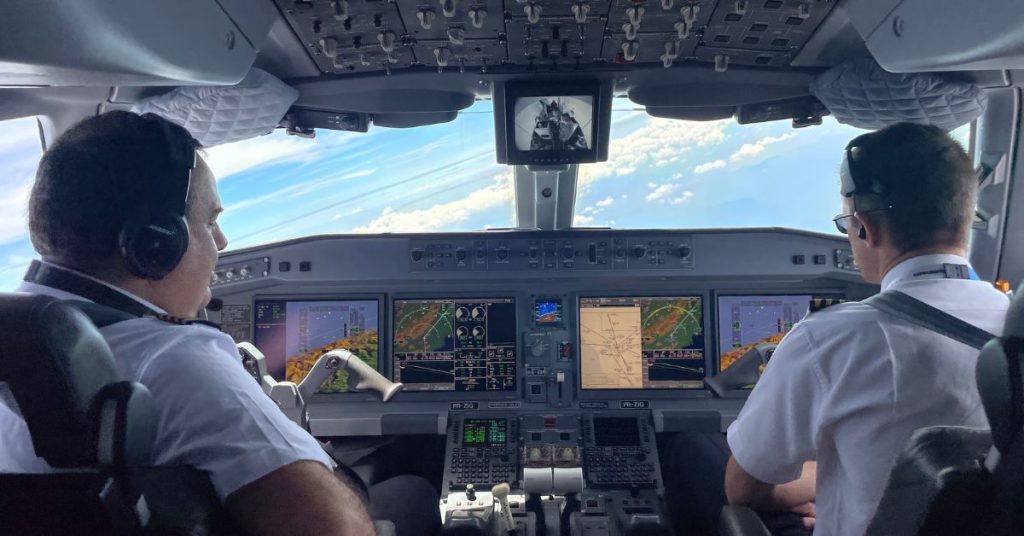
According to BP, SAF gives a reduction of up to 80% in carbon emissions over the lifecycle of the fuel, compared to traditional jet fuel.
“The E195-E2 was successfully tested on 100% SAF in June 2022, representing a significant step towards achieving a more sustainable and responsible future for air travel,” the release stated.
Making the right market fit also reduces the carbon impact.
“One out of four seats offered in Malaysia by local airlines is flying empty nowadays,” Victor claimed. “If we do a theoretical exercise and replace this excess capacity by a right-sized aircraft, that means 180,000 kilos of CO2 removed from the system.”
The company also claims that the E-Jets E2 has the lowest noise profile based on a noise footprint study they did.
The low-noise emissions are part of why Embraer E-Jets are considered “city airport specialists”, with airlines having deployed the jets in airports such as London City Airport, New York’s LaGuardia Airport, and Rio de Janeiro’s Santos Dumont Airport.
To be spotted in the Malaysian skies next year
During the media familiarisation, we were given the chance to experience the jet firsthand as Embraer’s black-and-gold E195-E2 (named TechLion) had a stopover at Subang Airport.
The demo flight, which started and ended at the Subang Airport, gave us a taste of just how the plane performs.
Seats on the single-aisle aircraft were spacious with ample legroom, and there were plug points for those who want to recharge their devices. The two-seat set-up means no one had to struggle in the middle seat.
True to what the team shared, the flight did feel quieter compared to other aircraft I’ve been on.
However, as the TechLion is a demo plane, SKS Airways’ commercial aircraft will bear some differences.
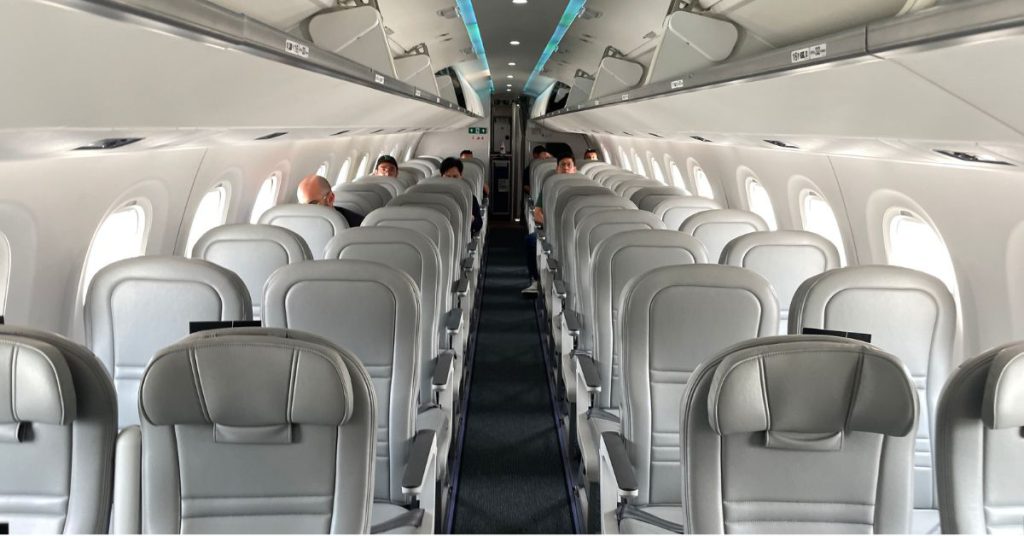
For one, the demo plane offered different seat pitches (the distance from any point on one seat to the exact same point on the seat in front or behind it), but SKS Airways’ E195-E2 will be configured in a two-class layout offering a 33-inch seat pitch and a 29.5-inch seat pitch. The emergency exit row will sport a 39-inch seat pitch.
According to the release, the SKS Airways E195-E2 aircraft are currently being customised and fitted out by Embraer in São José dos Campos, Brazil.
Speaking to the SKS Airways team, we were told that the Embraer deliveries are slated to happen next January, and the team aims to start operating them later in the year, perhaps as early as March.
The improved connectivity will certainly make for an easier travel experience, especially for those working outstation who want to visit their hometowns more conveniently.
Also Read: Here’s how M’sian SMEs can get 1,000GB of high-speed data at RM50/month to boost their biz
Why this founder of multiple bars in KL chose to start a Muslim-friendly Chinese restaurant

“The Qing aims to unite all different cultures, especially multi-cultures in Malaysia, and food is the best thing to unite everyone,” Waikeong Chan, the founder, said.
Located in KL, the restaurant serves Muslim-friendly Cantonese cuisine and features lavishly decorated interiors inspired by East Asian architectural designs.
But interestingly, Waikeong had previously founded Yilo Restaurant and Bar in 2017 and UNKNOWNZ Hype Bar in 2018 prior to this. Both of them alcohol-based ventures, as the names suggest.
So what made him have a change of heart and shift his business focus entirely?
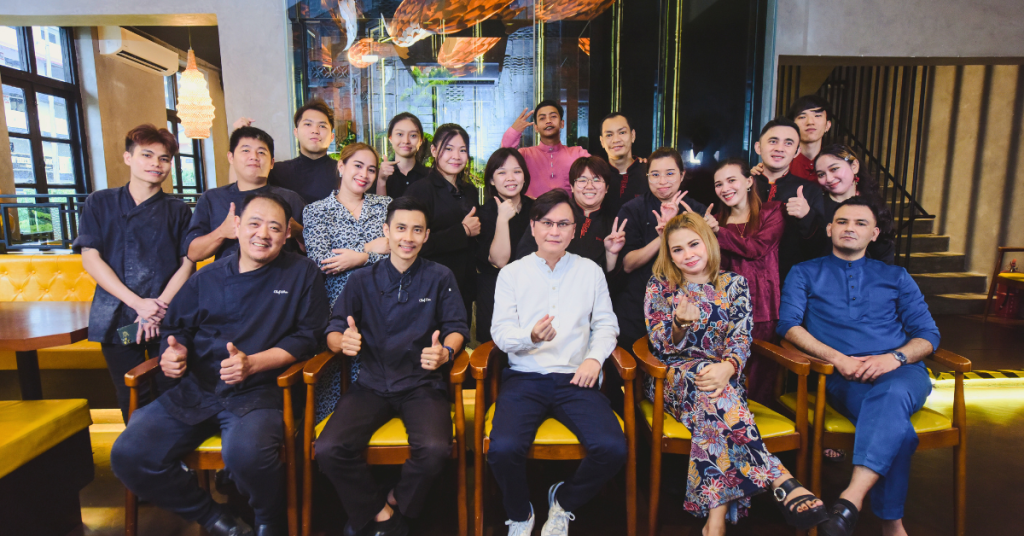
Focusing on a different demographic
Speaking to Vulcan Post, Waikeong shared that both Yilo and UNKNOWNZ were doing great when they started. But by the time the pandemic hit in 2020, “I found myself losing interest in the alcohol business,” he confided.
He later then came up The Qing, marketed as a restaurant serving traditional Chinese dishes prepared with a modern twist.
Now, it’s not rare to find establishments dishing out oriental food in Malaysia, and Waikeong acknowledges that as well. But in his opinion, he believes that the majority of chefs and entrepreneurs focus more on a non-Muslim customer base.
The Qing’s no-pork concept was inspired by his desire to share Chinese food with everyone, regardless of race or religion. And true to that, he happily reported that 50% of the restaurant’s clientele are Muslims.

According to its website, the restaurant’s head chef has more than 20 years of experience in handling dim sum and working at halal restaurants. Waikeong also shared with us that The Qing focuses on using premium and halal-certified ingredients.
So diners can probably rest easy knowing that they’re in pretty good hands. Aside from the popular dim sum, the eatery dishes out ala carte dishes like sweet and sour chicken and soy sauce steamed fish.
Having travelled frequently since youth, Waikeong explained that his interest and passion for food meant that he’s actively involved in creating the restaurant’s menu.
“I also share [with our chefs] many different types of food I had tried before, and creatively infuse some Western or Japanese ingredients into Chinese cooking, especially in dimsum making like foie gras Shanghai dumplings and sea urchin caviar with har gao (shrimp dumplings).”
Why the grand interior design, you may ask?
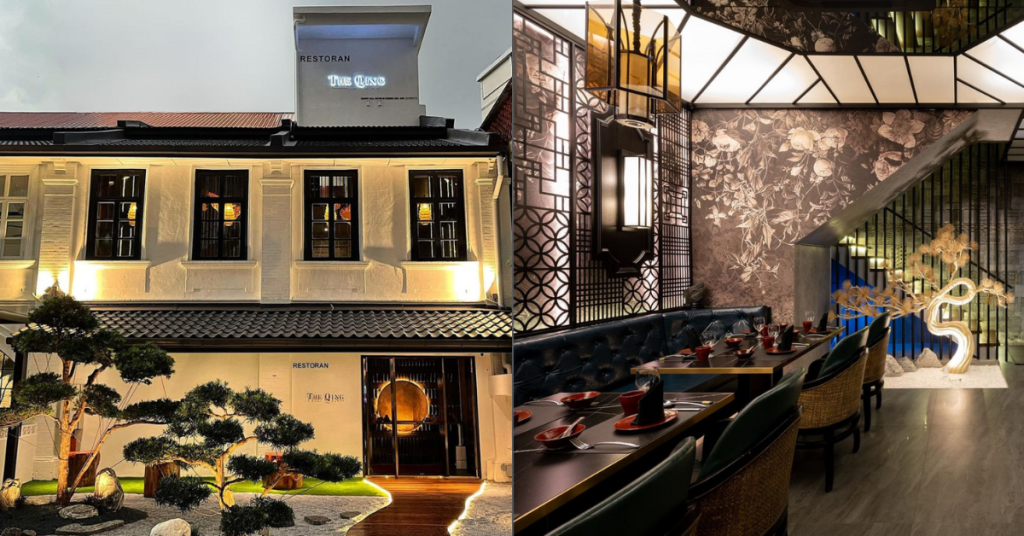
Back when he visited Chengdu, China in 2018, he told us that he was amazed by the Chinese architecture there which combines ancient structures with modern interior design. “I would like to bring another level of architecture for Chinese restaurants in Malaysia,” he stated.
This explains why The Qing is described on its website as blending the interior design aesthetics of Japanese restaurants with ancient China’s Qing dynasty.
With the restaurant named after the longest dynasty in the history of ancient China, I believe that is the aspiration Waikeong has for the establishment too—to not only take pride in what they do, but with a hopeful hint of longevity.
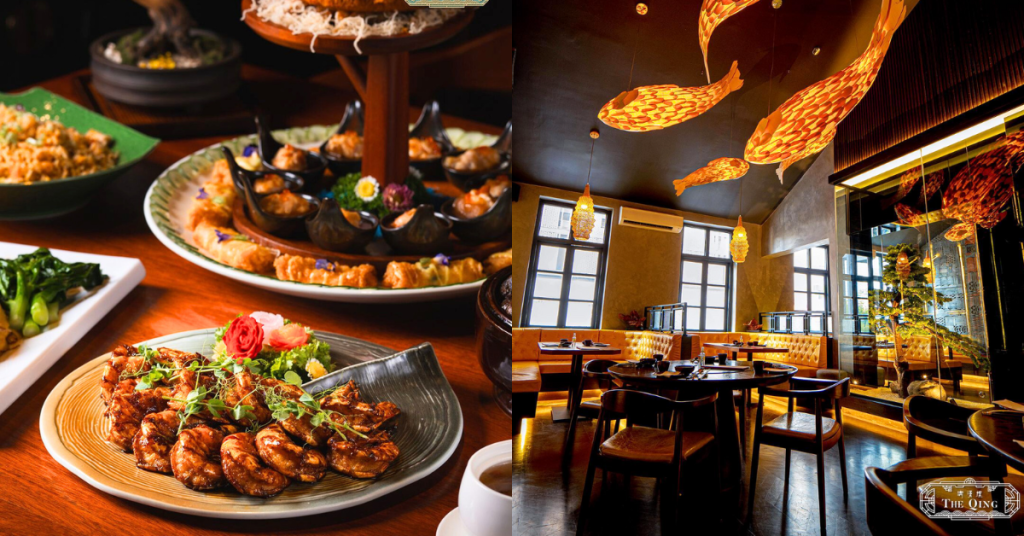
Uniting people through Chinese cuisine
When asked about the biggest challenge he’s faced over the years with The Qing, Waikeong said it was balance. Specifically, finding the balance between pleasing both Muslim and non-Muslim customers in the same space.
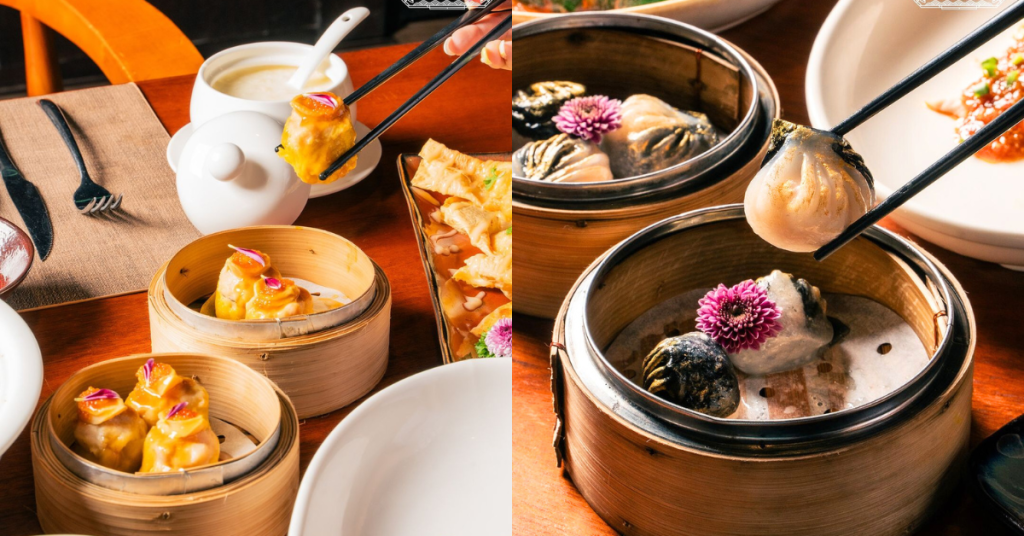
He shared that there have been cases where some Chinese disagreed with the food being pork-free, while some Muslims had a hard time trusting that the food was from halal sources.
Currently, the brand is planning to acquire its halal certification but is facing a slight drawback. You see, customers would typically bring their own alcohol into one of The Qing’s event halls or private rooms. This makes it hard for them to receive the certification.
For context, The Qing provides bigger groups with private rooms which can accommodate from 10 up to 20 people. All of which feature its signature ornamental decor, naturally.
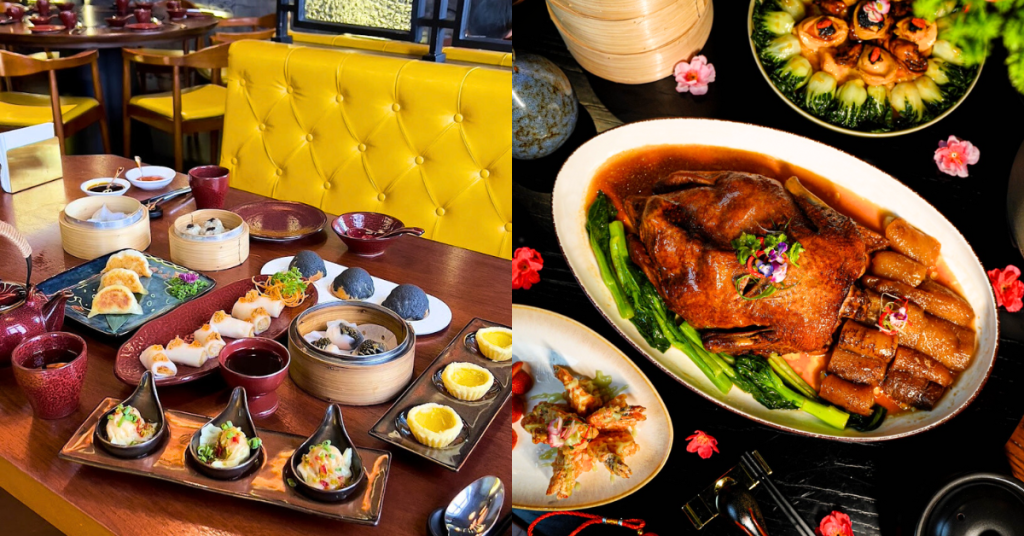
“But soon, The Qing will open a cafe concept with no alcohol allowed,” Waikeong stated.
In line with the brand’s aim of bringing together the people in Malaysia, Waikeong shared that The Qing is coming up with a culinary academy to teach Muslims how to cook Chinese food and make dim sum.
From there, they’re hoping to eventually expand The Qing’s brand and become an international name.
Aside from its first outlet in Chow Kit, KL, The Qing can also be found at Bamboo Hills, KL as well. Though I believe the latter seems to be marketing itself as more of an event hall with banquet services.
So if you’re looking to have an upscaled experience while dining on Cantonese dishes, this might be one place to consider.
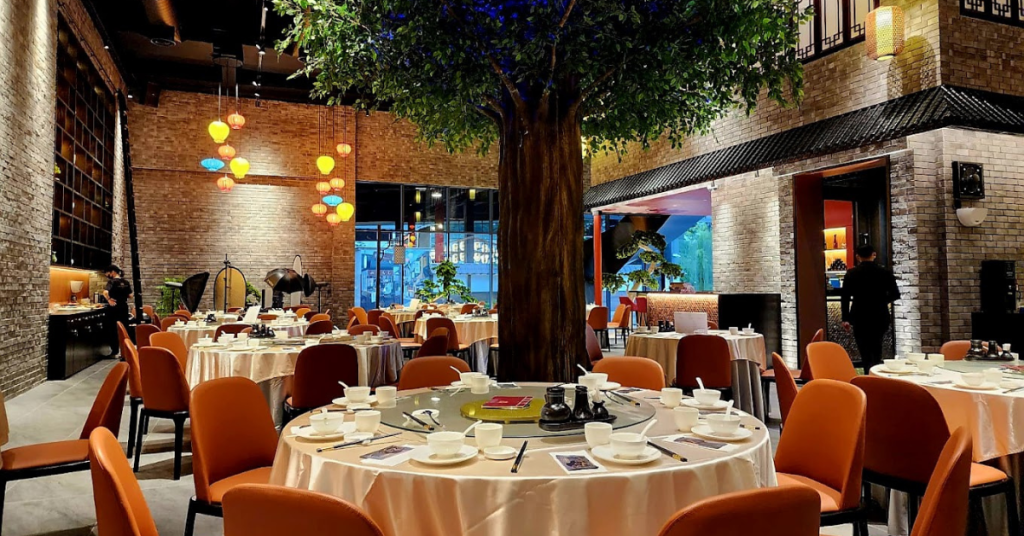
Also Read: These Perak bros turned their dad’s bunga kantan chilli sauce recipe into a full-fledged biz
Featured Image Credit: The Qing

